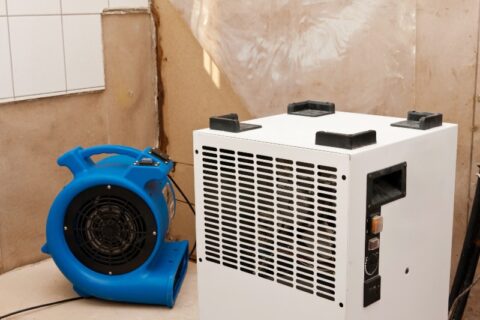What’s the Purpose of a Sump Pump
Water can get into your basement in different ways. Sometimes, it comes after a heavy rain, but it can also happen because of backed up drains, leaky water pipes, or some other problem with your plumbing. The result is still the same: excess water. A sump pump is designed to carry excess water from your home and pump it outside. Typically, the sump pump will be at the lowest point of your basement. It will be located in a sump pit, a hold that’s two feet deep and 18 inches wide. When the sump pit fills with water, it triggers the float activator arm or pressure sensor to turn on the pump. The pump pulls water out of your basement and to a spot that’s far enough away from your foundation that it will not flow back into your home. Sump pumps also have a check valve that keeps the water from draining back to the sump pump.
There are different types of sump pumps, and your plumber can help you determine the best type for your basement. A pedestal sump pump works in smaller pits where there is not enough room for a submersible pump and the requisite piping. The motor of a pedestal sump pump is mounted high above the shaft, which makes it easier to access and repair, but it is not waterproof, so it must be mounted where it won’t get wet or be submerged. The submersible sump pump has a design that is the exact opposite of a pedestal pump. It sits below the water level, inside the pump pit. It’s quieter, less obtrusive, more efficient, and easier to handle than a pedestal pump, and it has a longer lifespan. No matter which type of sump pump you choose, though, make sure you have a battery backup so that if the power goes out during a storm, the sump pump won’t stop working when you need it most.
When you have a sump pump, you decrease the chance of water damaging the baseboards and walls of your basement. You can prevent the growth of mold mildew, and fungi, and prevent termites and other insects from invading your home. By removing water from your basement, you keep the basement humidity levels low and improve indoor air quality throughout your home. What’s more, you’ll be protecting basement appliances from damage, and, more importantly, helping to maintain your home’s foundation. A sump pump is a critical component of any basement waterproofing system.
Sometimes, despite your best efforts at waterproofing your basement, something can go wrong, and your basement can flood. If your home sustains water damage, contact the water damage experts at Pacific Flood Restoration. We offer full-service, 24-hour, on-call emergency services throughout the San Diego area, and we’ve earned a reputation for being dependable, on time, courteous, and ethical. No matter the extent of your damage, our trained technicians have the experience, proven techniques, and state-of-the-art equipment to restore your home, fixing whatever damage it may have sustained. We serve the following cities: San Diego, Encinitas, Carlsbad, Oceanside, San Marcos, Chula Vista, Poway, El Cajon, Escondido, Rancho Santa Fe, San Clemente, and Solana Beach. Call 760.516.8549, or contact us through our website.


